Are you thinking about going hiking, biking, or exploring and need to know about the snakes in Texas? You have come to the right place because here is one of the best Texas snake idenification guides out there.
Not everyone can identify a snake as well as Taylor Swift, and it can be even harder to tell them apart while you are out in nature. It is always a good idea to grab a little background information on the different types of snakes before heading out and doing all the best things in Texas.
There are over 105 different types of snakes in Texas alone, and 42 different snakes in Texas hill country alone. If you have just spotted one take a look throughout this list of Texas snakes and try to find which one you may of run into while exploring the hidden gems of Texas!
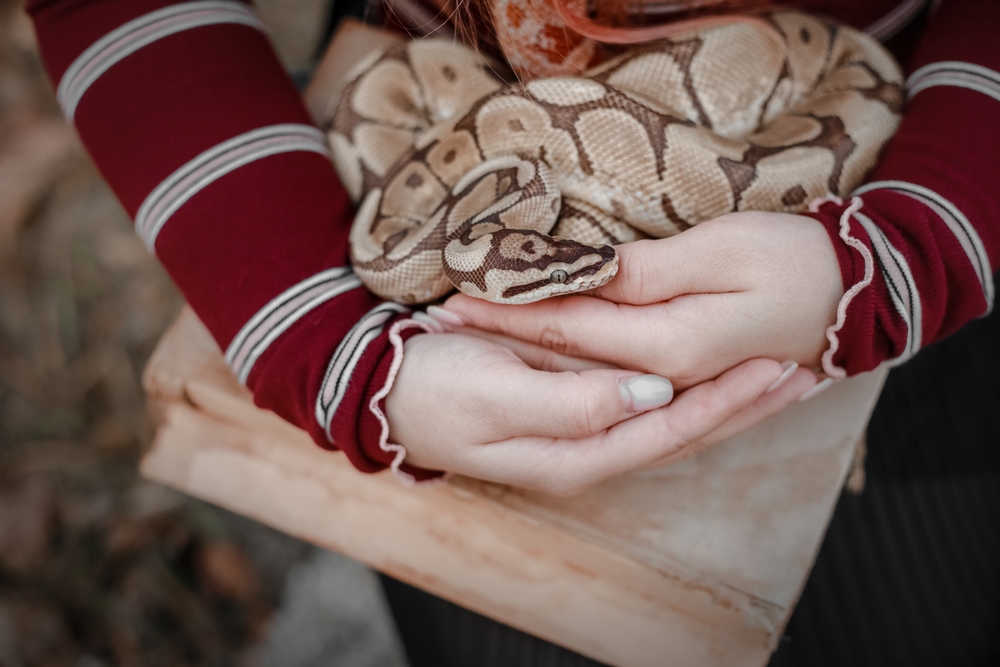
Nonvenomous vs Venomous Snakes: How to ID
There are a few different ways to tell if the common Texas snakes you encounter are venomous. The state classifies the ways to idienify Texas native snakes in four ways. This is great information to know before considering a move to Texas or if you live here!
Behavior Habits
This is one of the hardest ways to tell if the snake in Texas you are looking at is venomous. Some examples include the rattlesnake. When this species feels threatened it will shake and rattle its tail to warn you away. Although not all rattlesnakes in Texas have rattles so this is not always a safe bet.
Another type of behavior characteristic to keep in mind is where you are when you encounter the snake. Cottonmouth snakes of Texas live near the water. They do not care if it is a swamp, lake, or river, they just want to be close enough to a body of water.
Color of Snakes in Texas
The next way to ID snakes in Texas is by color. A copperhead snake will always have alternating dark and light bands. Although no two snakes have the same pattern, they all resemble an hourglass shape. Cottonmouths snakes of Texas will be a dark brown color with dark patterns. Sometimes these patterns can not always be seen in the wild because they tend to be almost the same color.
Another color pattern to keep in mind is if the snake has red and yellow bands around it. If the red and yellow strips are touching down the snake it is venomous. If the red and yellow are touching black in between, then that snake is not venomous. There are many different types of black and red snakes in Texas, and it is only bad when the yellow and red are touching.
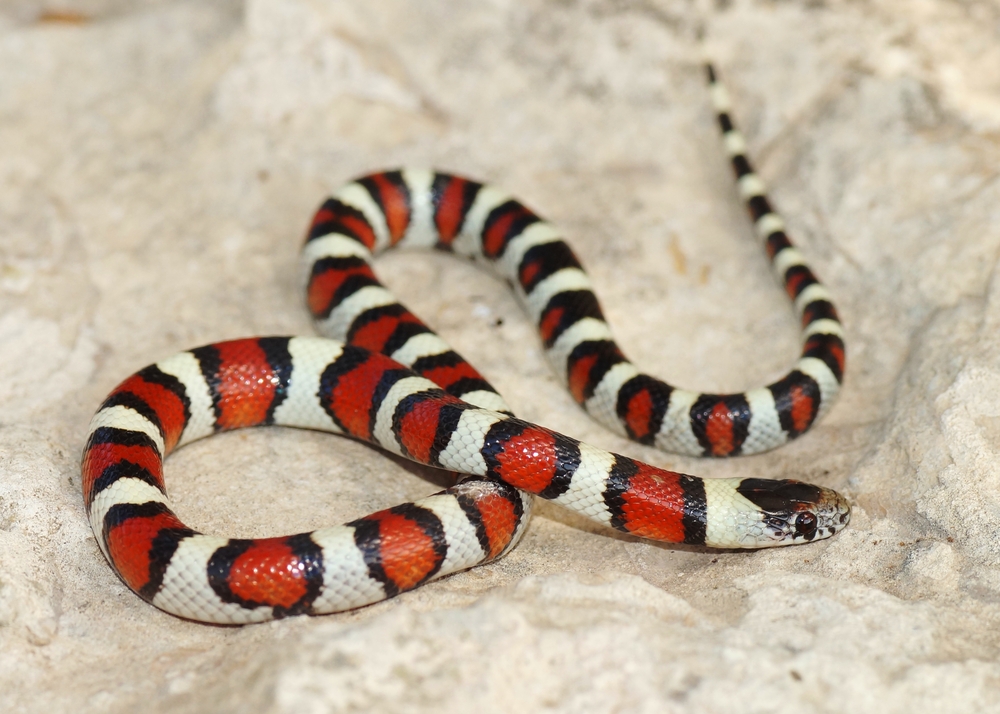
Snakes Head Shape
The simplest way to tell the difference between a venomous and nonvenomous snake in Texas is by the head shape. Nonvenomous snakes almost always have a rounded-off head, and venomous snakes have more of a triangular shape. Some nonvenomous snakes have evolved and have a triangle ish shape head too. It is best to keep an eye out and assume that all snakes with triangle-shaped heads are venomous.
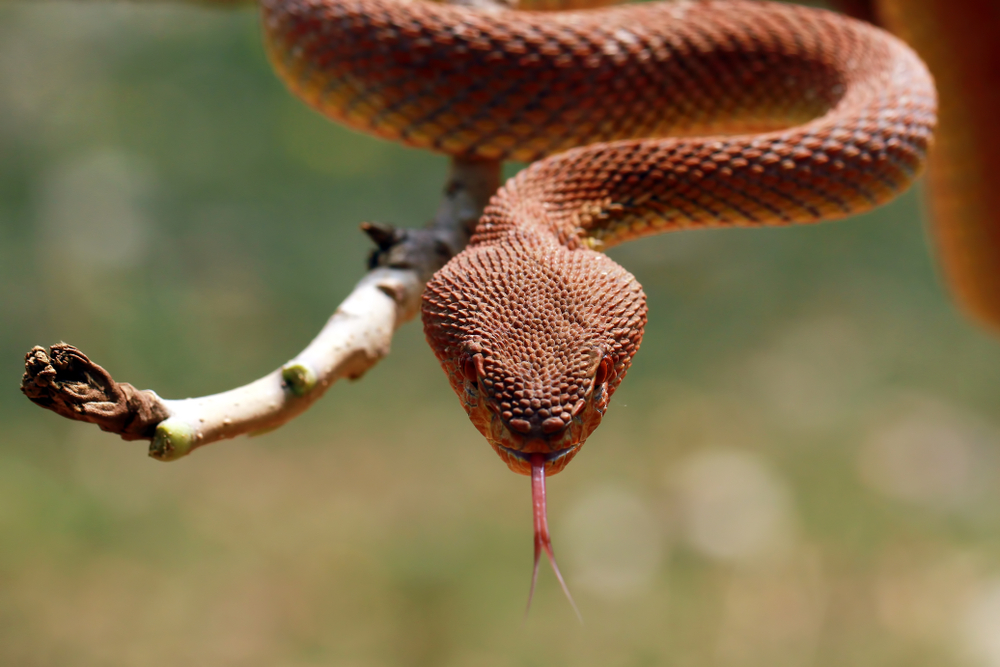
Pupils (Eyes) of the Snake
The last but not least way to see if a snake is venomous in this Texas snake identification guide is to look at the pupils of a snake. You do not want to look into the snakes eyes out in the wild. It is another way that scientists have been able to classify the differences in the lab.
Similar to a cat’s eye almost all venomous snakes have small, black, vertical pupils surrounded by yellow and green colors. On non-venomous snakes, the pupils are round in shape with no much color. Do not try to look your wild snake in the eyes to try and find out.
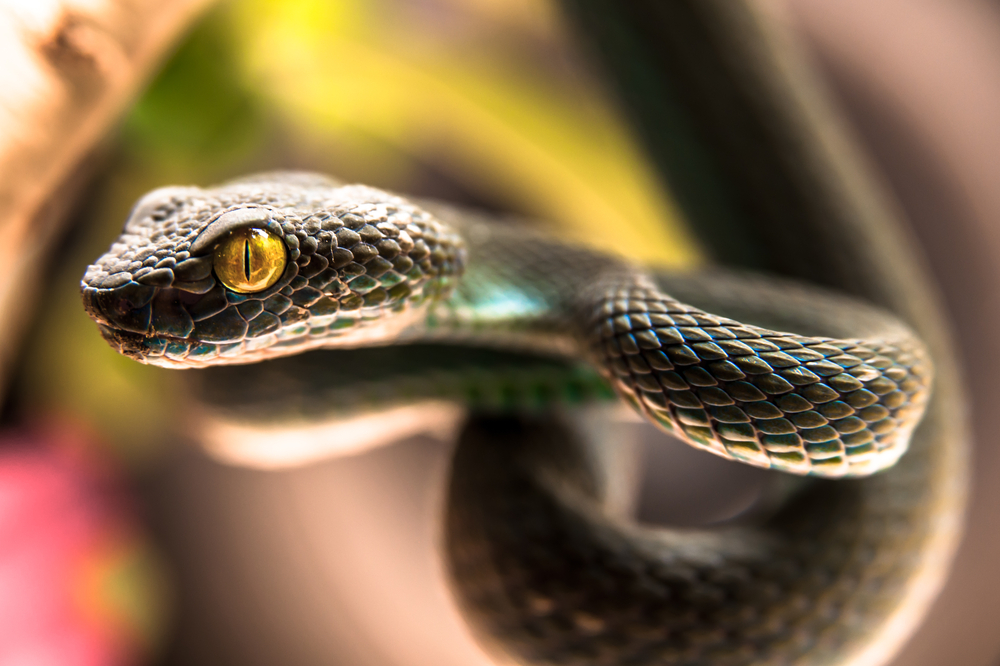
Commonly Confused Texas Venomous and Nonvenomous Snakes
Two of the most commonly nonvenomous snakes that are confused for venomous snakes in Texas are the Diamondback Watersnake (Nerodia rhombifer) and Blotched Watersnake (Nerodia Erythrogaster transverse).
Both of these nonpoisonous snakes in Texas are very commonly found in the South Central Texas area. Because of their dark markings these two types are often mistaken as cottonmouths. But, their only defense is a strong musky smell they release, which will smell awful, but it will not hurt you.
Venomous vs Poisonous Snakes in Texas
In Texas, there are both venomous and poisonous snakes. While these terms are often used interchangeably, they actually refer to two different types of snakes. The poisonous snakes in Texas produce toxins that are harmful when it touches your skin and if it is injested. Poisonous snakes are often bright in color to let other animals know that they are dangerous. The two poisonous snakes in Texas are the Coral Snake and the Texas Lyre Snake.
Now Venomous snakes are more dangerous than the poisonous ones and inject venom through fangs when they bite. The venom causes damage your tissues and nerves, and very possibly could kill you if you are bitten. Most of the venomous Texas snakes are darker in color and have triangular-shaped heads.
Both types of snakes are found in Texas. It is always best to keep away from snakes and try not to bother their homes. This is because most of the venomous snakes in Texas are not typically harmful unless provoked or if they feel threatened.
What to do if you Encounter a Venomous Texas Snake
Encountering venomous snakes in Texas can be a dangerous and frightening experience. Hopefully, with the right knowledge and precautions, you can stay safe and avoid potentially dangerous situations.
The best thing to do if you come across a venomous snake in Texas is to stay calm and still.
Do not make any sudden movements that may startle or provoke the snake.
Always keep a safe distance of at least 6 feet or more away from the snake.
If you can, or care, to try to identify the snake do it from a safe distance. Assume it’s venomous if you cannot identify it.
Do not ever touch or handle the snake even if you think it’s non-venomous. The best thing to do is to leave the snake alone and head out slowly.
If you are bitten by a snake immediately call 911. Then you will want to wash the area with soap and water as fast as you can.
Venomous Snakes in Texas
Did you know that there are over 20 different types of venomous snakes in the US? And in the state of Texas, there are 3 venomous and 1 poisonous snake. The venomous snakes in Texas are the Copperhead, Cottonmouth aka Water Moccasin, and Rattlesnake. These three snakes are all classified as Pit Vipers expect for the the last species, the Coral snake. The Coral Snake is the most colorful of all the poisonous snakes in Texas.
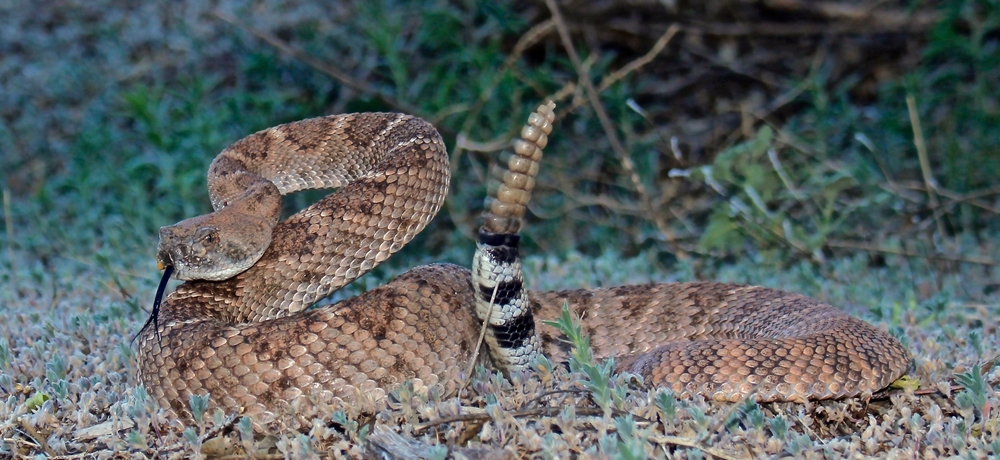
Copperhead Snakes in Texas
The Southern Copperhead is the most common of all the central Texas snakes. Followed by Broadbanded Copperhead and Trans-Pecos Copperheads, that are normally found in eastern and central Texas.
Copperheads like to live in wooden or rocky areas. But they also can live near bodies of water and vacant, overgrown lots. Almost all copperheads are light brown in color with reddish-dark brown rings on their backs and can measure up to 30 inches.
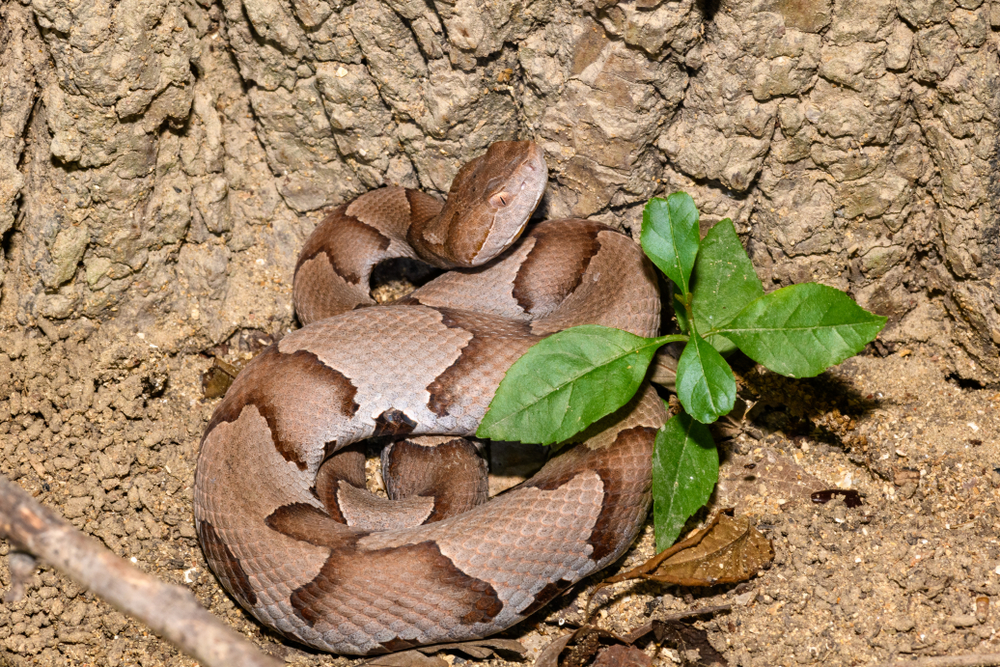
Cottonmouths AKA Water Moccasins
There is only one type of Cottonmouth in the state. It is known as the Western Cottonmouth and can almost always found in or near bodies of water. If you are around swamps, marshes, rivers, or ponds you will want to keep a close eye out for a cottonmouth nearby.
They can grow up to 3.5 feet and their color varies from black to olive green. The wide dark pattern on their scales makes them easy to identify compared to other Texas black snakes.
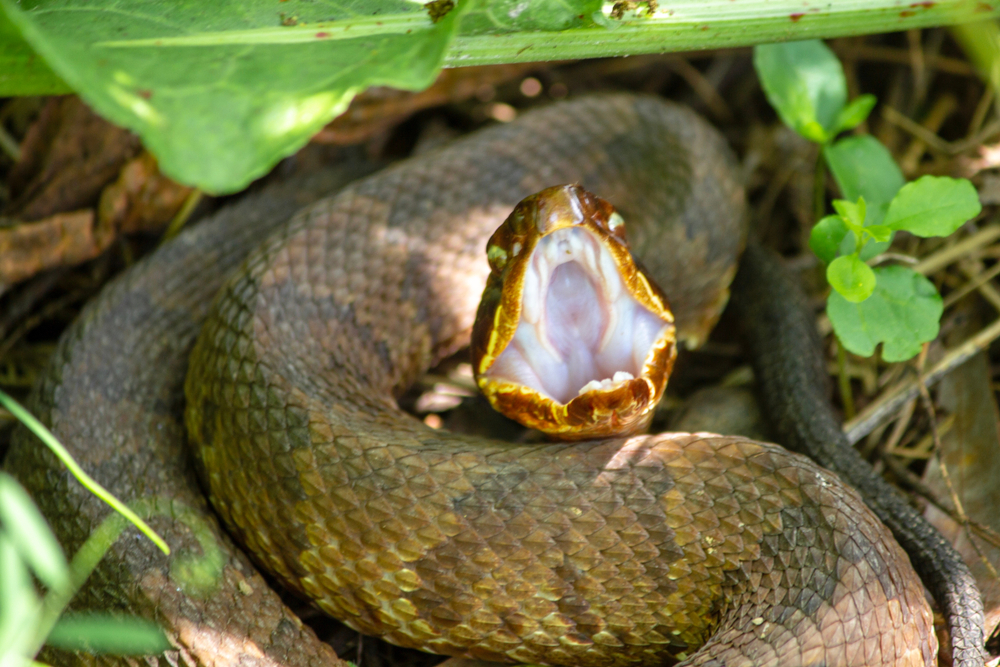
RattleSnakes in Texas
There are 6 different kinds of rattlesnakes in Texas and they are can be found throughout the entire state. They vary in length, pattern, and color but they all have some sort of rattle at the end of their tail. You do not ever want to be close enough to a rattlesnake in Texas to be able to hear it.
The different types of rattlesnakes in Texas are:
- Western diamondback
- Timber rattlesnake
- Mottled Rock rattlesnake
- Banded rock rattlesnake
- Blacktail rattlesnake
- Mojave rattlesnake
- Prairie rattlesnake
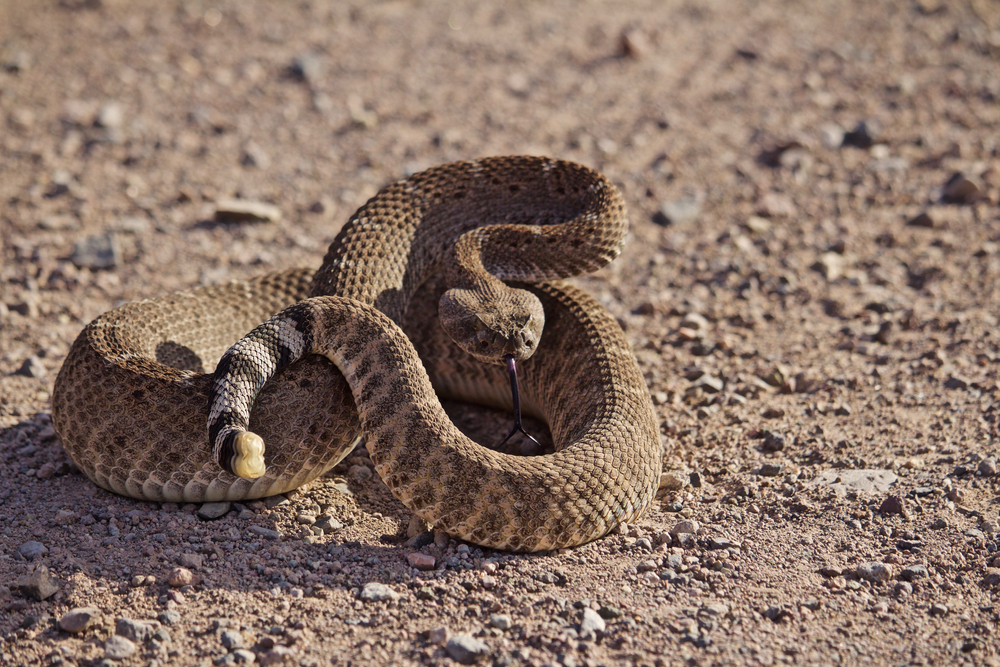
Texas Coral Snakes
The other type of poisonous snake is known as a Coral Snake. They have rings of red, yellow, and black along its scales. The best way to tell this snake apart from the other black and yellow texas snakes is to check out the way the colors are in a pattern. If the red and yellow strips are touching each other, then it is a Coral snake and is very poisonous. If the black ring is in between the two colorful rings, the snake is not poisonous.
A little rhyme you can memorize to stay safe is “red touch yellow, it will kill a fellow”. The Coral is the less aggressive of all the harmful Texas snakes.
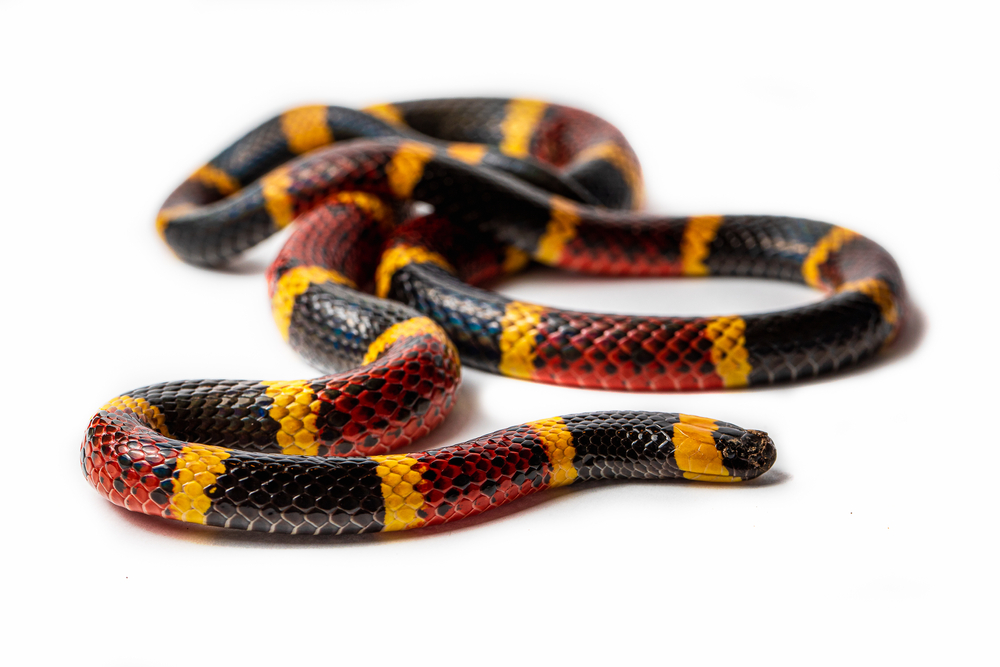
Non-venomous Snakes in Texas
There are 105 different types of nonvenomous snakes in Texas and only 4 are poisonous or venomous. So you will most likely run into a nonpoisonous snake than one that can really hurt you. The most commonly found non-venomous snakes in Texas are listed below.
Garter Snake
You will find plenty of central texas snakes, but the most popular is the simple garter snake. They can be found in neighborhoods and love to live in small ponds. They mosly eat small frogs and small rodents and release a foul smell if you get to close.

Western Rat Snake
Another one of the most common snakes in north Texas is the western rat snake. As shown in the photo below they also are dark brown in color and grey in color. The Western rat snake is one of the most commonly spotted grey snakes in Texas. Adults can grow to become as big as 4-6 feet. They also have a nick name of being the “chicken snake”. This is because they can be found preying on small chicks and they love to eat chicken eggs.
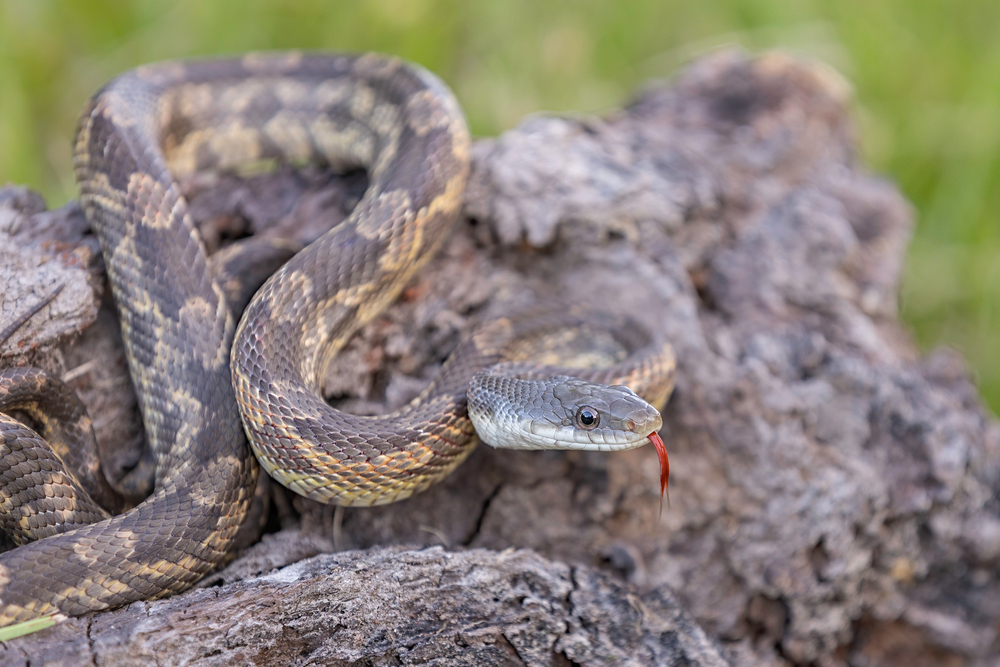
Diamondback Watersnake
The next snake is the Diamondback Watersnake. As you can see it is also a grey and black color and looks very similar to the western rat Snake with the dark bands of color on its scales. They live in the water and are confused for cotton mouths at first glance. If you ever run across one you might known from the stinky smell they release if they feel threatned.
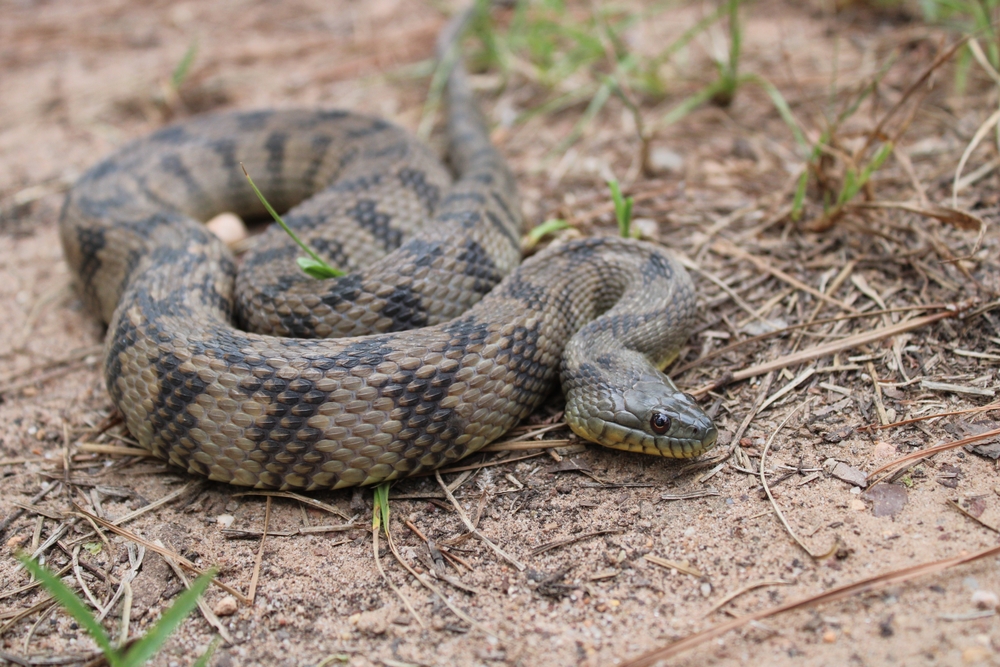
Rough Green Snake
The cutest of all the snakes in Texas has to be the Rough Green Snake. They are often skinny in size and have a bright green color. Rough Green Snakes are harmless and will most likely slitter away from you very fast. They never grow any larger than 3 feet and only eat small incets.
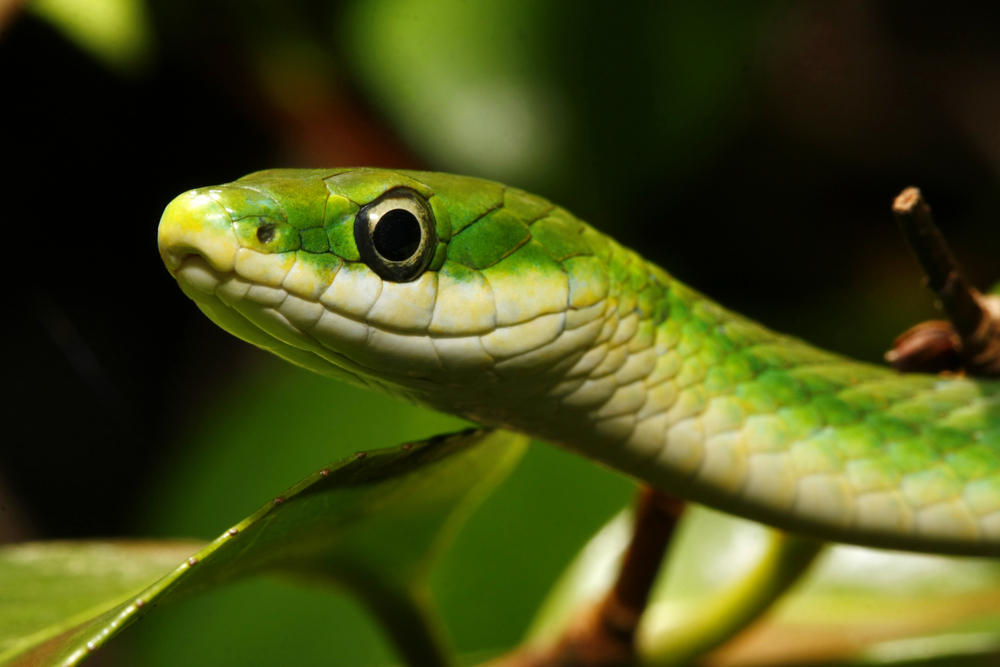
Texas Patchnose
Next up is Texas Patchnose snake. They are the most commonly found in the Nothern part of Texas, but have also been found as far south as Mexico. They hangout in the rocks and are found on hiking trails on and in the road. Patchnose snakes in texas are usually a light sandy color with lines of black running down their bodies.
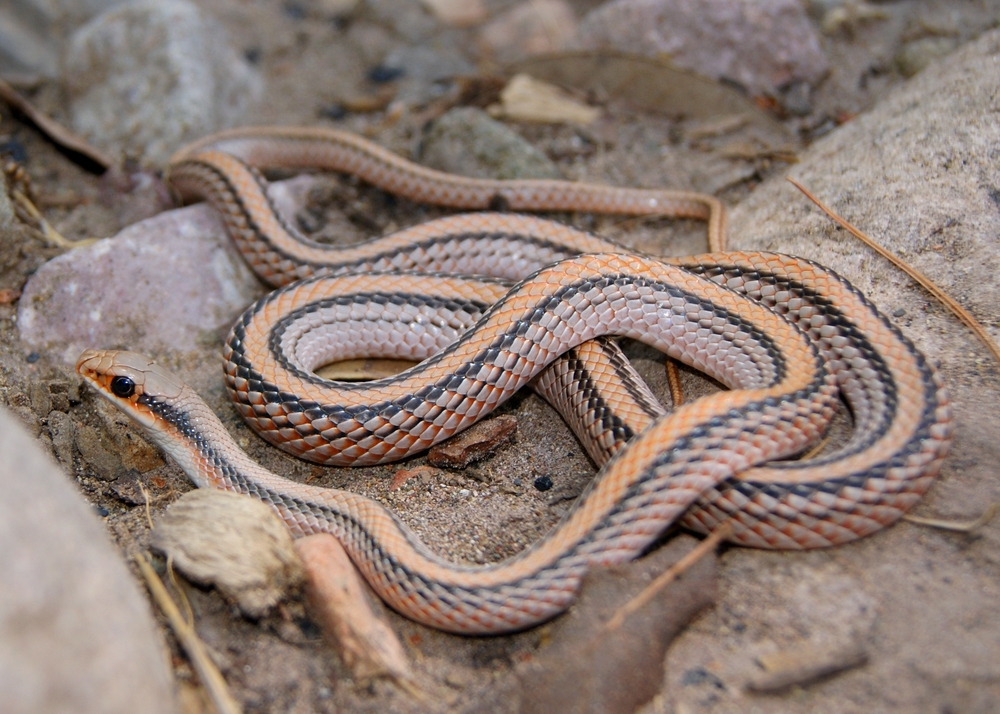
Eastern Hognose
The Eastern Hognose loves to either play opposium or strike like a cobra. They have loveingly been given the nickname the “Spredding Adder”. They have a speical nose shaped like a hog. That they like to use when digging up toads from the sand. They inflate the toad to make it easier to swallow with their nose too. They are harmless to people and if you are ever bitten by one you will just have a small amount of swelling.
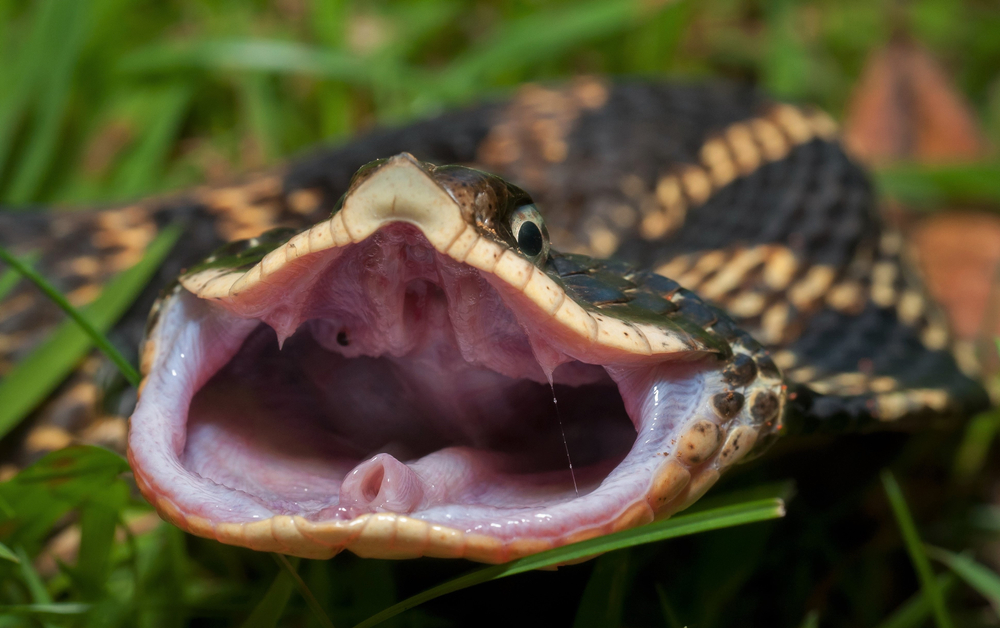
Coachwhip Snakes
Coachwhip Snake are long, slender snakes can that can grow up to six feet in length and are normally reddish-brown in color. Do to their fast-movements and agility, they are sometimes be mistaken for a venomous snake, but they are harmeless to people.
Indigo Snake
The indigo snake is a large and can grow up to eight feet in length. They are dark blue-black in color and are found in grasslands and in the wooded areas in Texas.
Ribbon Snake
Ribbon snakes are similar in appearance to garter snakes, but with a longer, slender body. They have distinct stripes on their backs and like to live near bodies of water.
Texas Brown Snake
The Texas brown snake is a small snake and typically brown or gray in color. It has a faint stripe down its body. Brown snakes are often found in the different neighborhoods of Texas and like feed on insects and small rodents.
Bull Snake
The bull snake is another common species that is mistaken for a rattlesnake. This is due to its similar colors and patterns. The Bull Snake has no rattle and has round eves instead of the vertical slit of venomous species.

 15 Best Places For Horseback Riding In Georgia
15 Best Places For Horseback Riding In Georgia